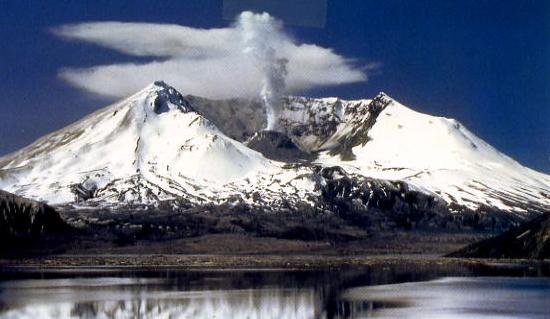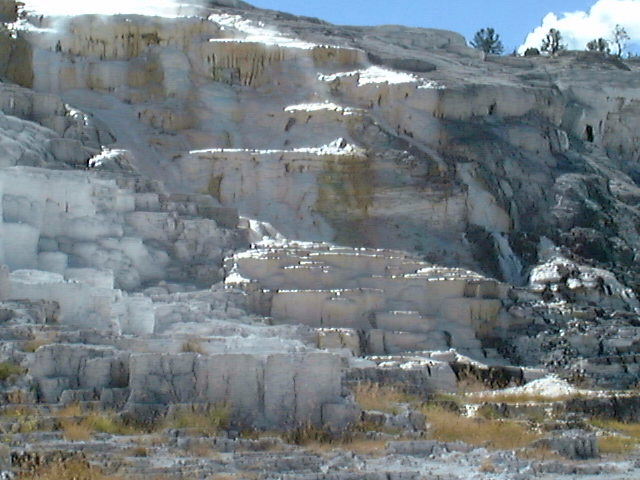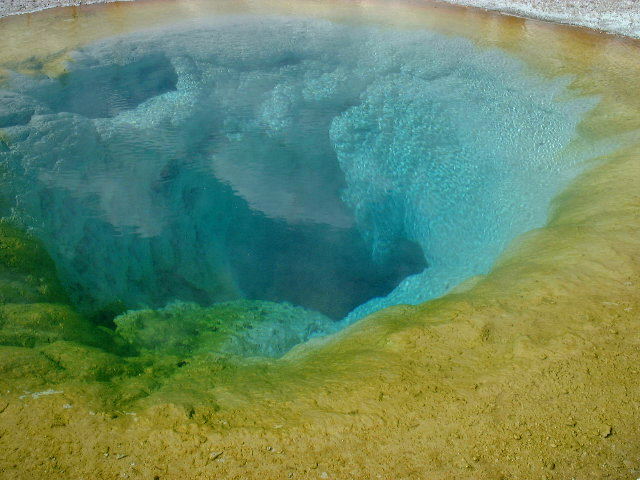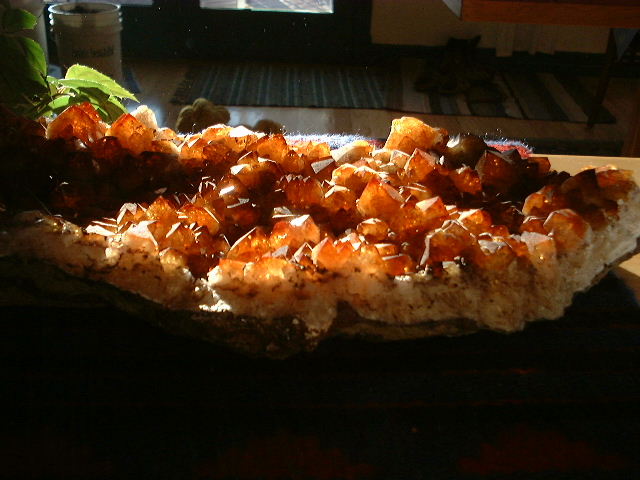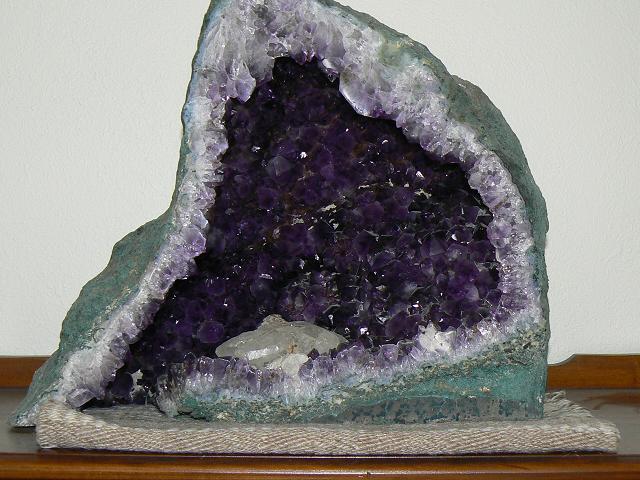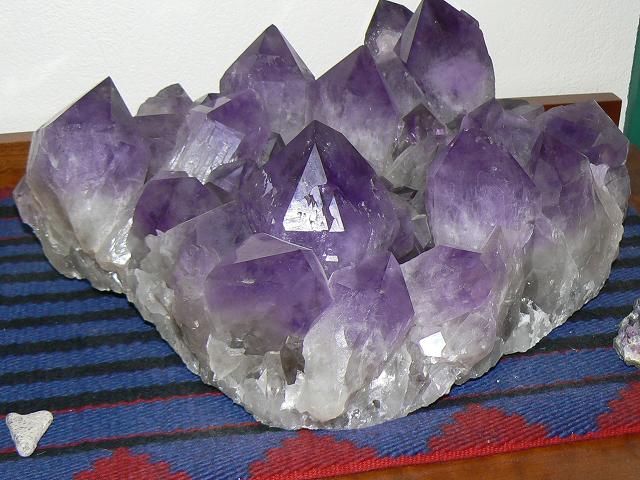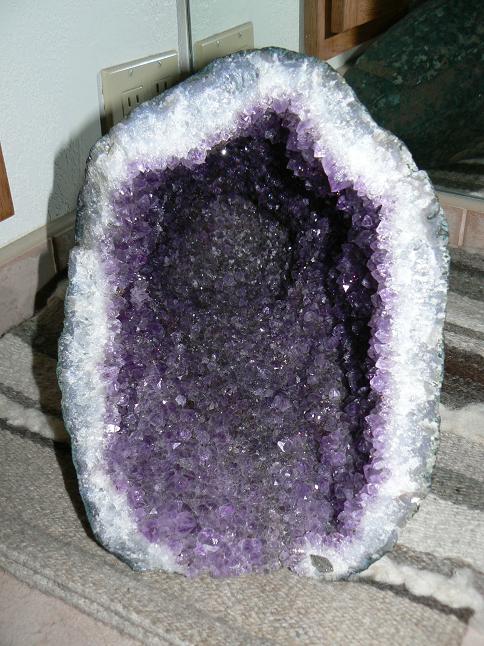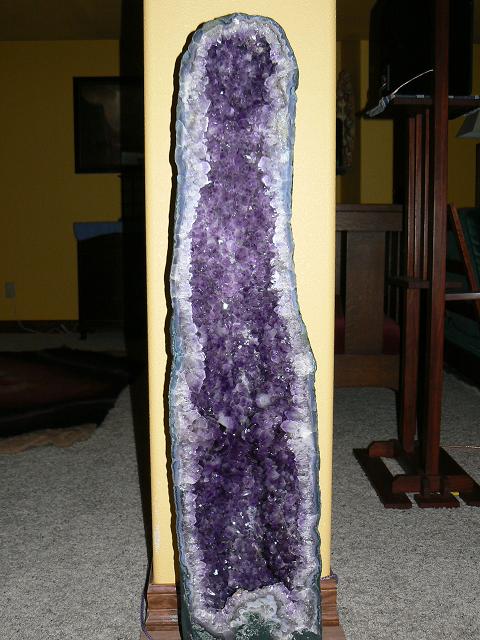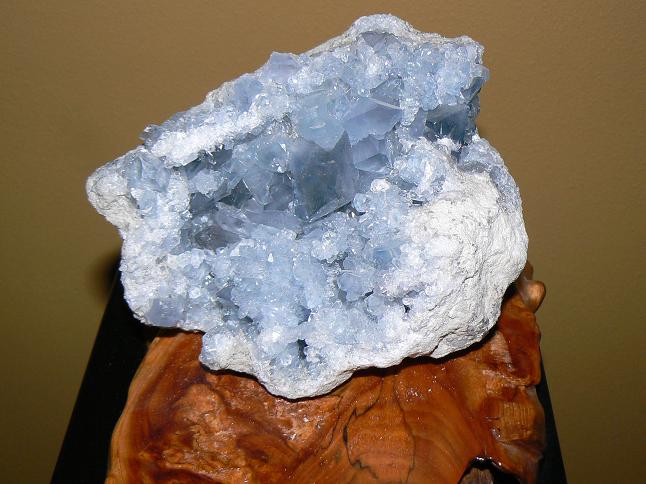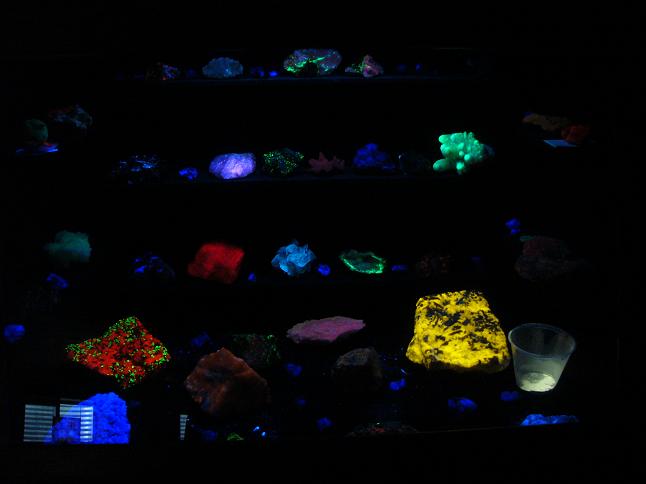This
is a lava tube we climbed through
in Idaho.
See me down there?
Here
is a picture of the spectacular
Mammoth Hot Springs in Yellowstone
National Park.
Here
is a picture of the Morning Glory
Pool in Yellowstone National
Park. Is this pretty or what?
This
is citrine. This crystal
structure is called a plate because the crystals formed on a somewhat
flat surface.
As
you can probably tell from the next
series of pictures Heather and I really love amethyst.
Labradorite
has a wonder iridescent
quality to it. You can see the blue glow in this picture
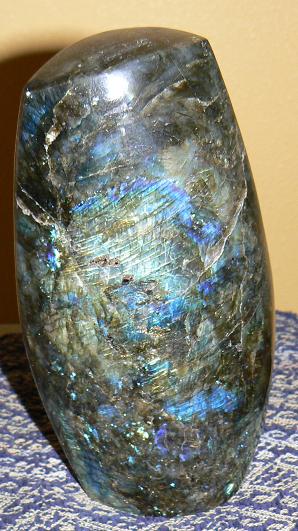
A find from the fall 2006 Denver mineral show, lapis from
Afghanistan. Its hard to tell from the picture but it has ribbons of
gold colored pyrite flowing through it. It is a really beautiful piece.
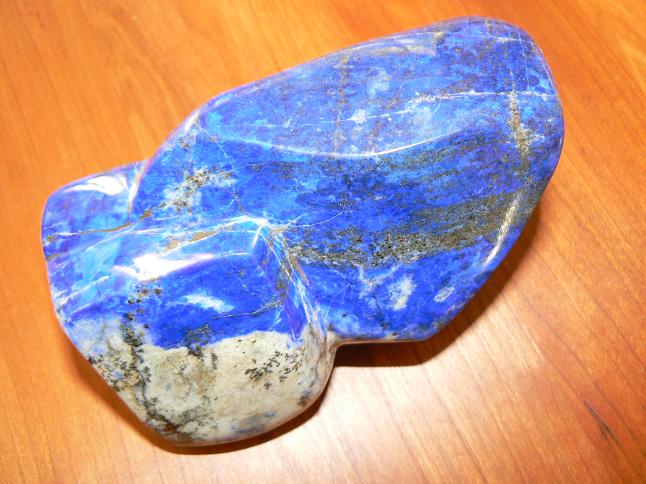
Smokey quartz crystals are alway nice. Here is a specimen we got in
Arkansas.
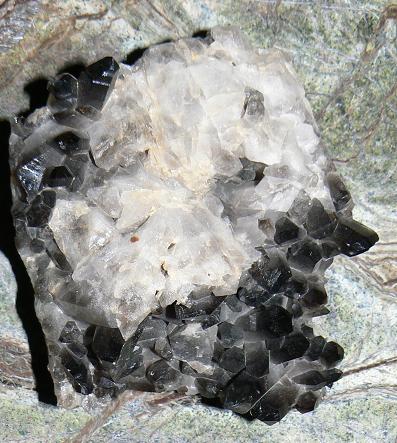
This specimen of Rhodochrosite was found in the Sweet Home Mine in
Alma, Colorado. These pieces are somewhat rare.
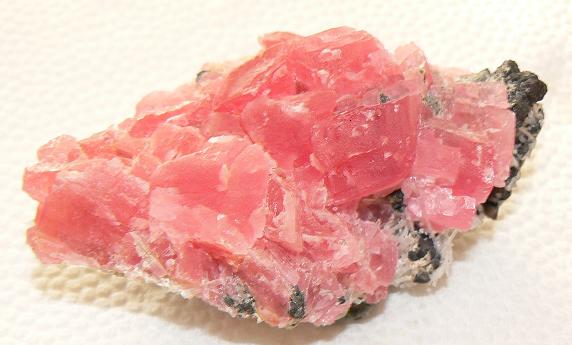
An Australian boulder opal specimen which we bought at Taos Gem and
Minerals many years ago. We stop at the store every time we go through
Taos. They have a wonderful collection of rocks and gems.

A collection of crystals and an amber tree setting on a slice of slate
with dendritic patterns. The slate was given to us by our friend Mark.
He found it and thought we would like it and we do. This is a
constantly changing display that usually is found on the map table in
our living room. From top clockwise we have our amber tree made for us
by a friend in Denmark from amber he found on the beach, yellow crystal
sulfur, an amethyst stalactite, amazonite we found near Lake George, a
cluster of quartz crystals, rhodochrosite crystal cluster and finally
more quartz crystals that have titanium deposited on them. This makes
them iridescent.


for locating fluorescent
rocks in the
field. This portable black light has both long wave (365 nanometer
wavelength) and short wave (254 nanometer wavelength)
ultraviolet
lamps because some rocks respond to one wavelength and some rocks to
the other wavelength. Some fluorescent rocks respond differently to
both types of ultraviolet. EBay has a very active fluorescent rock
area. Click
here
to check it out.
After I had accumulated a bunch of these rocks it became clear that I
needed a better way to display them. At about this time I had just
finished setting up my wood working shop so I decided to build a
display case with built in white and ultraviolet light sources.
Switches on the side of the display case control which light is on. The
display case was the first major wood working project I did in my new
shop. Here is a picture of it.
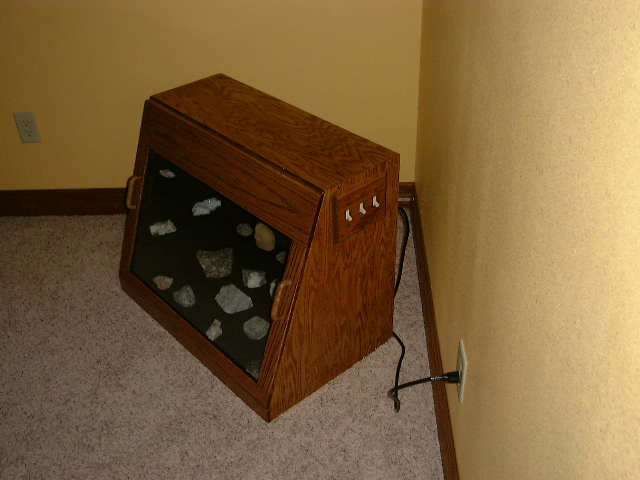
Below is a marginal picture
of the
display case with only the white light on. A white light is built in so
people can see what the rocks look like before being stimulated by
ultraviolet light. Most are very plain and you would never have any
idea of how special they really are. If you picked up many of these
rocks you would just put them back down as they are typically
uninteresting.
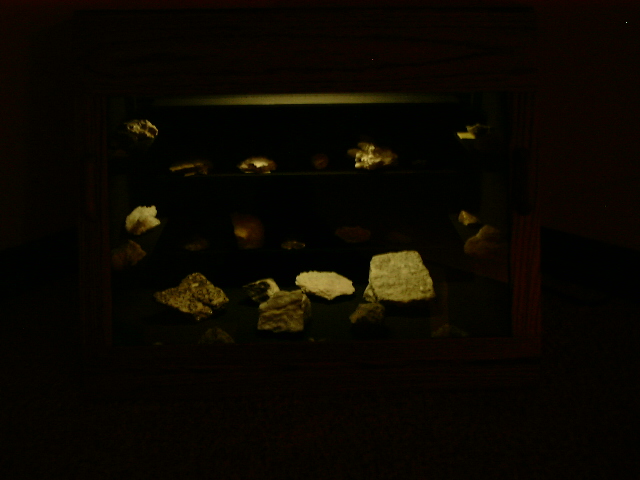
The picture below was taken with both
the short and long wave lights on. You can see a little of the case in
this picture.

Below is a closeup of the rocks doing their thing. This picture barely
does justice to the glowing rocks. They are much more impressive up
close and personal. We have rocks that glow in about every color of the
rainbow. Some of the rock exhibit phosphoresce meaning they continue to
glow even though the ultraviolet lights are turned off. Some
phosphorescent rocks will glow dimly for hours after exposure. Some
other rocks exhibit tenebrescents meaning that the physical color of
the rock changes after exposure to ultraviolet. If these rocks are then
put into the sun, their natural color will return.
When I do my fluorescent rock display show for guests I never fail to
get a gasp when people first see the glowing rocks. They are truly a
wonder of nature. If you asked me nicely the next time you are at our
house, I'll give you a personal show.
